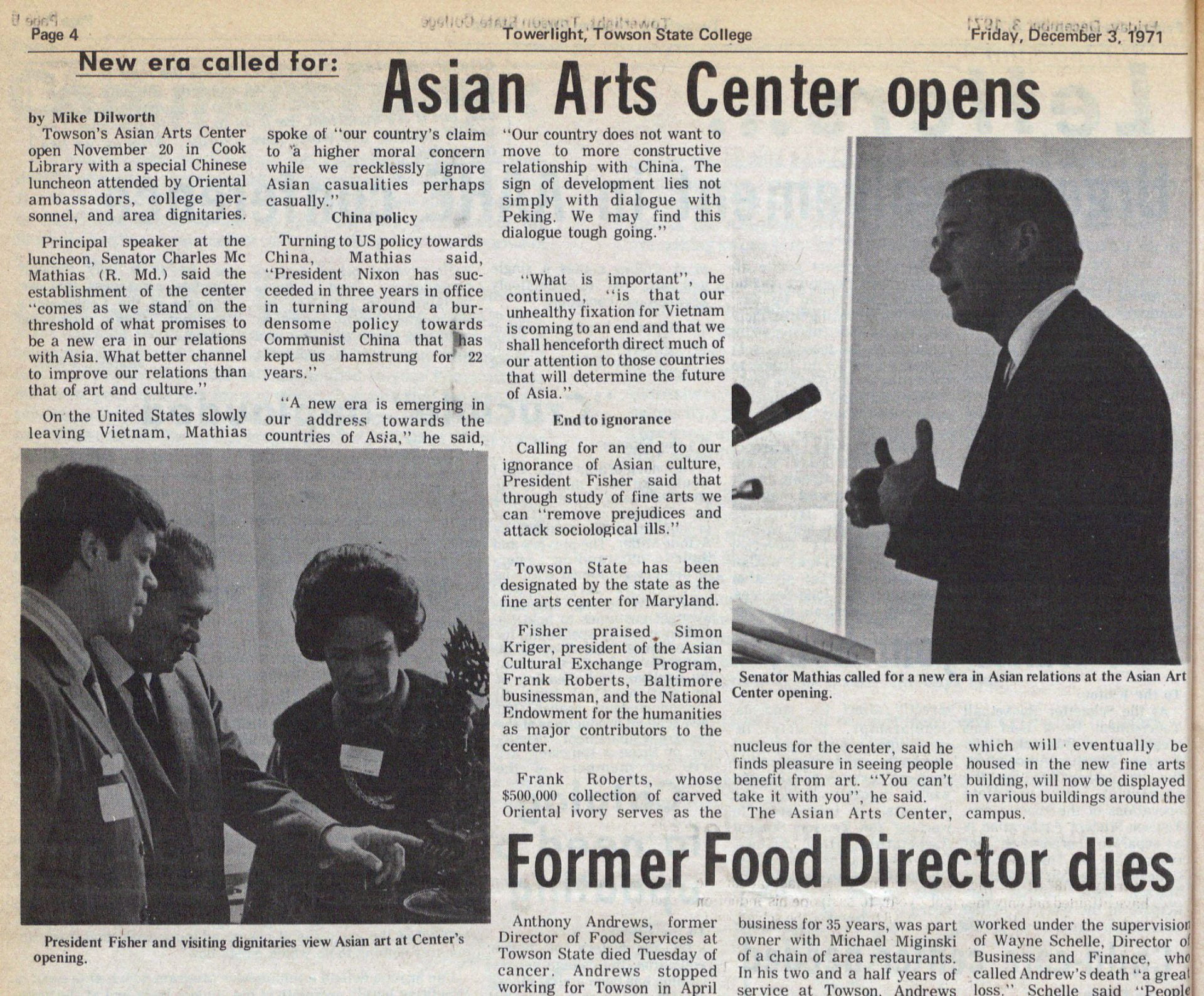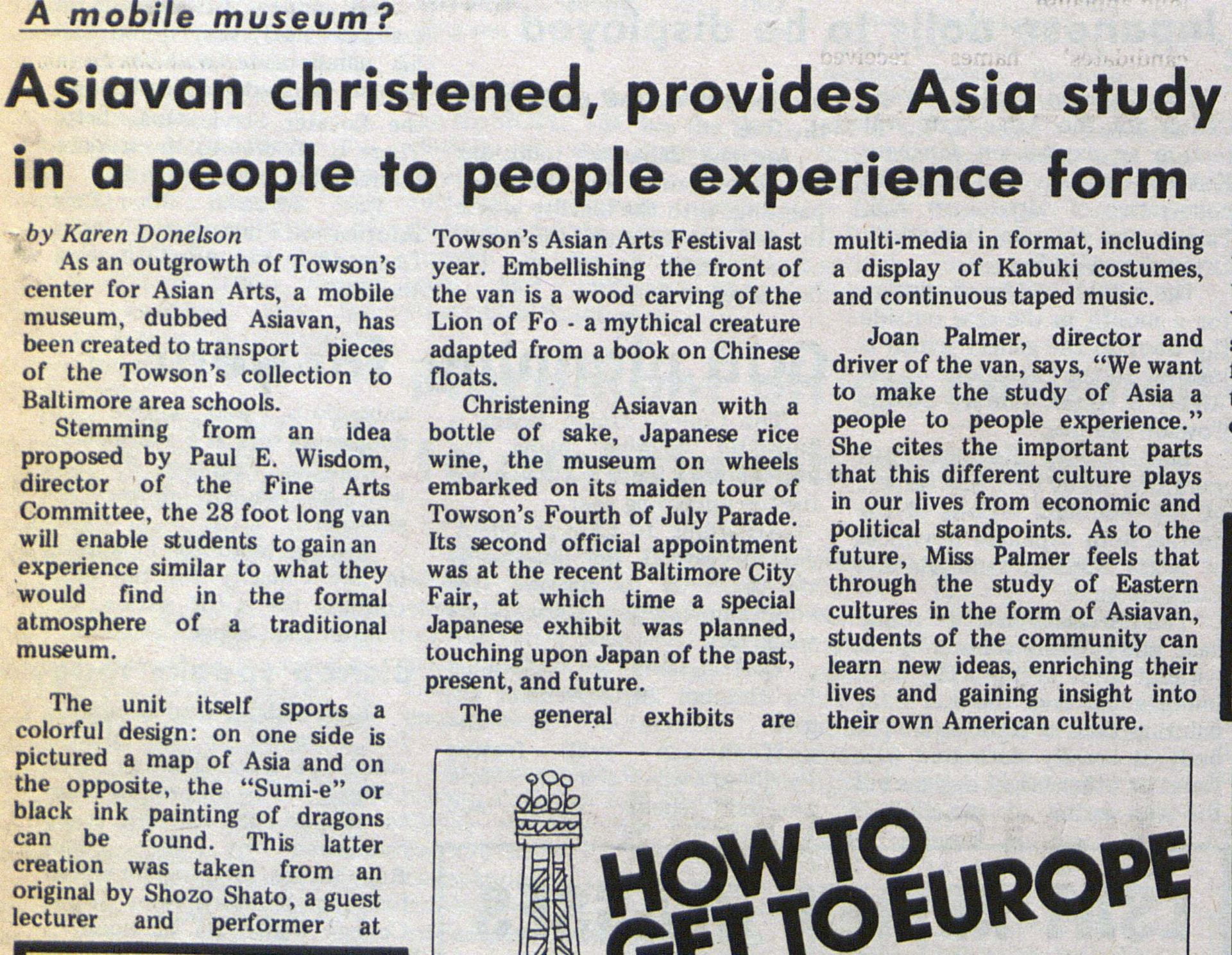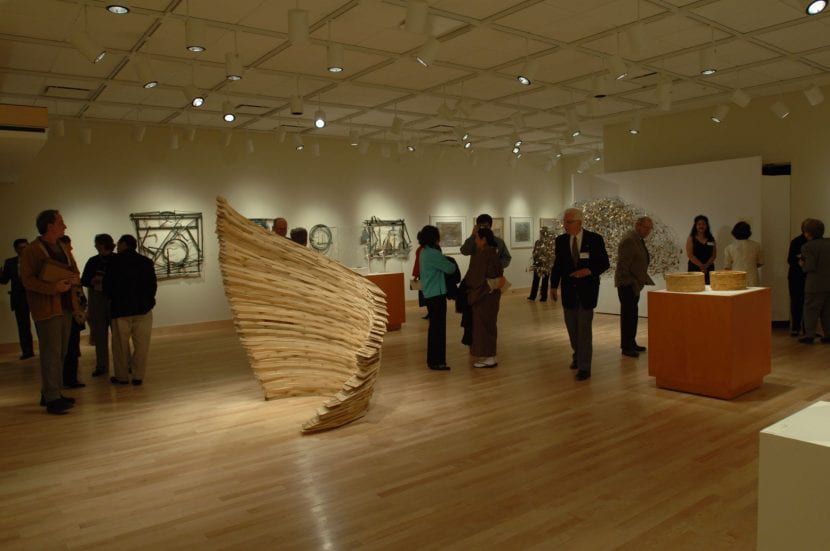While looking for ways to incorporate more art in everyday places for the students of Towson State College [TSC], President James Fisher and Vice President Paul Wisdom approached a local businessman, Frank G. Roberts, about donating his collection of ivory to the school in 1971. This donation and a matching grant the same year from the National Endowment for the Humanities were the catalysts for the creation of not only the Asian Arts Gallery, but also educational programs, cultural events, classes, and future donations.

The Gallery was first housed on the fifth floor of the Albert S. Cook Library, but was given its own space in the newly constructed Fine Arts Center, now the Center for the Arts, in 1973.

The grant allowed TSC to invest in an innovative educational program. Called the “Asiavan”, a traveling exhibit was created and taken to area schools and festivals to showcase Towson’s collections.

Other programs created included lecture and movie series, dance and musical performances, and special exhibitions. It also allowed TSC to offer more classes that specialized in Asian history and culture. The connections made through the Asian Arts program were especially significant at a time when America was still immersed in the conflict in Vietnam.
A number of curators and directors were employed to oversee the center in the 1970s, including J. Brooks Joyner, Jane E. Ostryniec, and Ock-Kyung Lee. From 1978 until 1986 Harriet McNamee was the Director and Curator, and from 1986 until 2013, the position was filled by Suewhei Shieh. She oversaw the opening of the current Asian Arts Gallery after the renovation for the Center for the Arts.
Currently, Joanna Pecore serves as the Director and Nerissa Paglinauan serves as the Asian Arts & Culture Center Program Manager.
The AA&CC now holds about 600 objects from China, Korea, Japan, India, Tibet, Nepal, Cambodia, Indonesia and Thailand.
